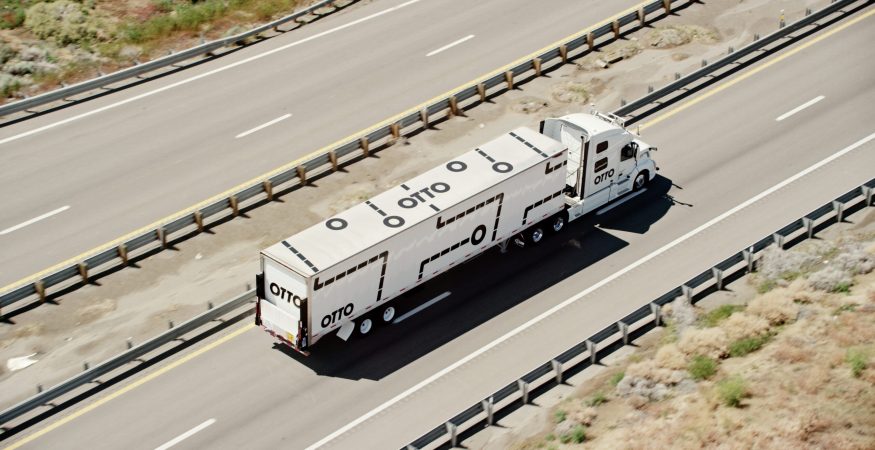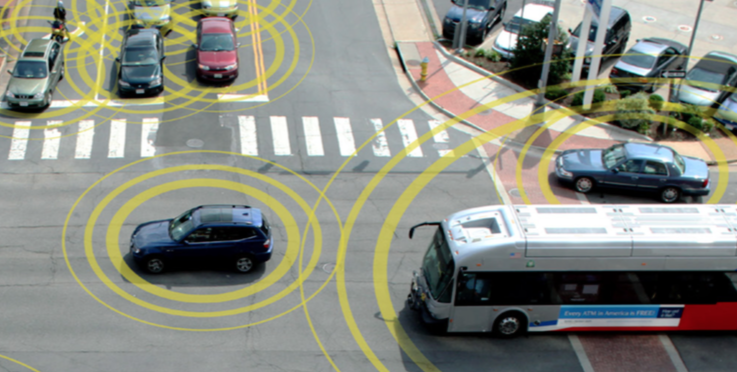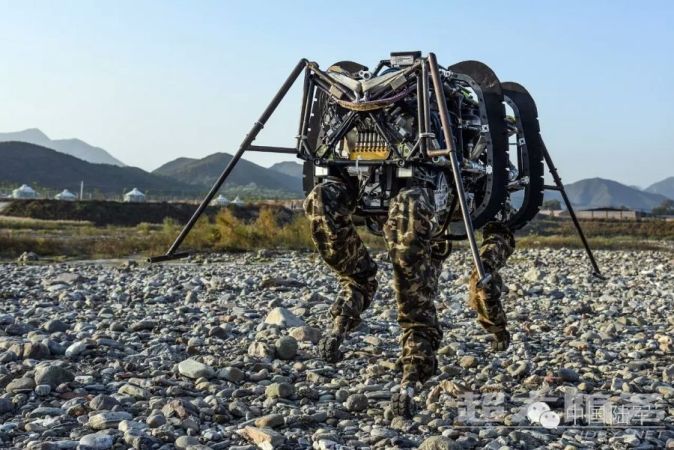

Battles can be decided on the margins. Logistical concerns like the availability of ammunition, or having a stretcher on hand to evacuate a wounded soldier, play key roles. A new robot from German defense giant Rheinmetall, the Mission Master XT, is a way for soldiers in the field to bring everything they might need on patrol, without having to spare a driver for a supply truck. Announced June 18, the XT is the latest iteration in a series of useful robot carts. It’s marketed as a self-driving robotic mule.
Featuring four massive tires, the XT looks like a car designed for a GI Joe playset only without a place to put a driver. However, Rheinmetall notes in a release that “If necessary, this robust, tried-and-tested mechanical platform can operate in manned configuration, with an integrated joystick and emergency seat.” It’s about 12 feet long and 8 feet wide.
The default configuration for the vehicle will be as a mostly autonomous cart rolling alongside troops. It can receive commands from a variety of NATO control units. Rheinmetall makes a specially designed tablet, complete with thumbsticks and physical buttons, that lets a single person direct the machine.

Designed and built by Rheinmetall Canada, the XT weighs 4,887 pounds, and can carry 2,204 pounds of cargo beyond that. Diesel powered, the vehicle has a maximum un-refueled range of over 460 miles. Thanks to built in lithium-ion batteries, the XT can operate on electric power alone for up to 6 hours. In military jargon, this is “silent watch operations,” to indicate that the machine’s sensors are also running from electrical power.
[Related: The Air Force’s new guard dogs are robots]
The company boasts that the Mission Master XT can run over extreme terrain, including “ice, snow, and sub-zero weather conditions, as well as sandy, rocky, and mountainous topography.” It can float and swim across some kinds of water with its full payload, suggesting that it could be employed to carry materials across rivers and on the edge of lakes. The massive tires are thick enough to keep functioning even with holes in them as deep as 3/4ths of an inch.

Production models of the Mission Master SP, an earlier machine in the same family, include 3D LiDAR, cameras in the front and rear, and the option to include more sensors to navigate in areas where GPS is unavailable or denied. Beyond that, the modular nature of these platforms could let the XT carry special surveillance equipment, and power it off of either its diesel engine or its lithium batteries.
Autonomous navigation comes from PATH, a Rheinmetall sensors-and-software toolkit that allows the vehicle to track objects, perceive terrain, and plan routes accordingly. Another model of autonomy is a simple follow command, where the robot’s sensors track a person or vehicle in front and keep pace at a safe distance.
[Related: Autonomous war machines could make costly mistakes on future battlefields]
In practice, this all means that the Mission Master XT can follow soldiers on foot at great distances over rough terrain, and even perform useful functions as a scout, light personnel transport (it has that emergency seat option), or a sentry once the soldiers have reached their destination.
In 2018, Rheinmetall competed some earlier Mission Master vehicles in a “mule” challenge. The task required the robots to carry heavy cargo down a 4,500-foot route within 30 minutes; the Mission Master robotics succeeded well. It also highlights the baseline role for a vehicle like this: following alongside humans, and carrying gear the way pack animals have accompanied humans to war for millennia.
Unlike mules, which have mostly been confined to cargo carrying in war, Rheinmetall envisions teams of autonomous Mission Master robots working together as “wolf packs,” with two scouting robots guiding the weapons of a team of four armed robots behind it. In this wolf pack vision, the robots attack with weapons ranging from machine guns to missiles or loitering drones. In the wolfpack announcement, Rheinmetall emphasized that a machine gun on a robot can “provide much more firepower than the usual man-carried section weapon,” and then specifically noted that “Engagement of targets is remote-controlled, never autonomous.”
While the Mission Master XT announcement did not name any weapons it might carry, the company said its missions could include “fire support,” and specified that even if the autonomous machine is built to carry and fire a gun, “Rheinmetall is committed to maximum operational safety at all times, keeping a human in the loop in all kinetic operations.”
It is likely that the most immediate impact of the Mission Master XT will be lightening the load of soldiers on patrol in rough terrain. The possibility exists that, with added weapons and a more aggressive mission, the robot could see action not just evacuating the wounded, but inflicting wounds under human control.
Watch a video about it below:
























